Guellala Heritage Museum – Djerba, Tunisia
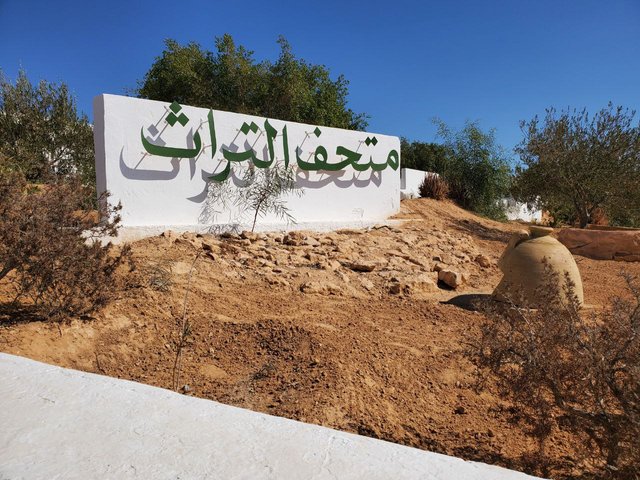
The heritage museum sign
Dear Steemians,
I would like to start this article as part of the Steemit Atlas Challenge by presenting to you one of the most fascinating cultural treasures of Tunisia: The Guellala Heritage Museum, situated in the picturesque village of Guellala on the island of Djerba. It is not just a static hall hosting exhibitions but a living time machine and each section of the museum, every exhibit, every life-size reconstitution is a story of Djerba’s past. From the once-upon-a-time art of pottery to the rituals of holy weddings and from the traditional ways of fishermen to the beauty of island garments , the works do not just tell but immerse in Djerba’s historical environment. I was able to visit this museum on November 1st, 2022, and, based on my real encounters, I will lead you through the sections of the museum with my photos taken from my Samsung Note 10 Plus.
Entry and Exterior Architecture
The first sight that one comes across as he or she approaches the museum is the dazzling glow of its whitewashed façade. It is, in fact, the very personification of the architectural aesthetics of Djerba – luminous white contrasts the blue of the Mediterranean skies while bright green and blue-painted doors splash color and charm. The modern structure of the museum is topped with round domes outlining the Arabic region and artwork inscriptions that comfortably invite one into the splendor of history.
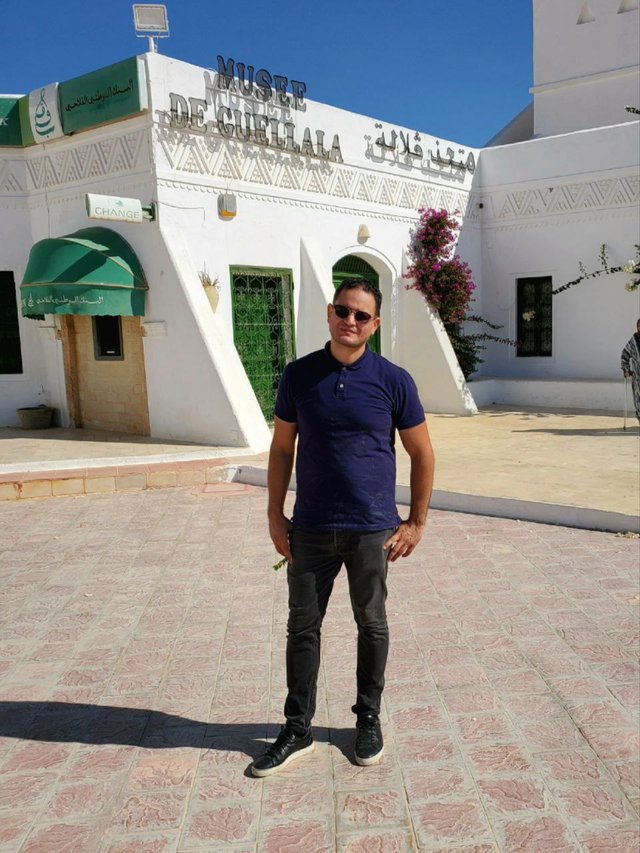
The main museum façade showcasing the beauty of the island’s architecture and the Mediterranean itself.
Architectural Model
Upon entering, guests are met with a beautifully made miniature of the museum and roadway structure surrounding it. This small-scale reconstruction captures the perfect puzzle fit of domed roofs, shaded courtyards, and arcaded walkways. More than anything, it is a visual eulogy to the architectural brilliance of Djerba's builders and their designs which updated and tweaked over many generations with skyrocketing temperatures in mind.
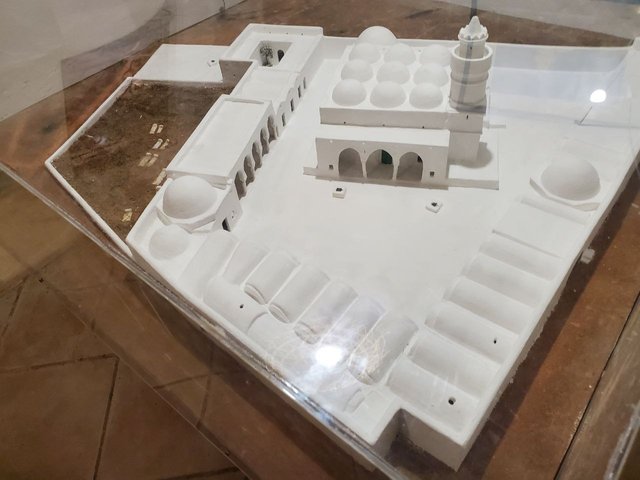
This included miniatures depicting the traditional layouts of Djerbian houses, in great detail.
Pottery and Millenary Craftsmanship
For hundreds of years, Guellala has been the capital of pottery-making in Tunisia, and the whole museum is dedicated to this ancient craft. Detailing the process from retrieving clay to hand shaping it followed by firing it. The walls are stacked with gigantic vessels straight out of the past, amphorae, and cooking pots that mention longstanding directions occupied by individual craftsmen who will never get a line of press.
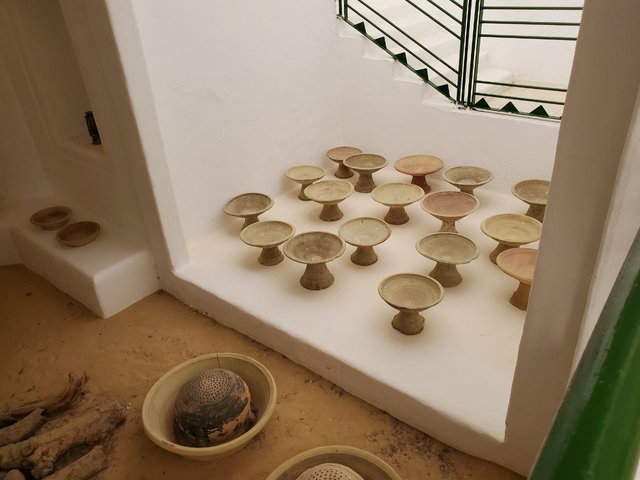
Furthermore, large jars, amphorae as well as other links to the pottery traditions of Guellala.
A giant copper pot and a life-sized figure appear to cook the ingredients for a traditional wedding feast. The layout is so authentic that you can almost smell the rich spices of Tunisia surrounding the place.

The bustle of a kshirala set-up, at a wedding.
Traditional Women’s Costumes
One entire area of the museum is reserved for the stunning Byzantine wedding dress from Djerba. These clothes, typically made of silk or fine cotton and embellished with elaborate embroidery, are paired with numerous layers of gold jewelry. They are not only the symbols of beauty but also the social status and cultural pride of the bride's family.
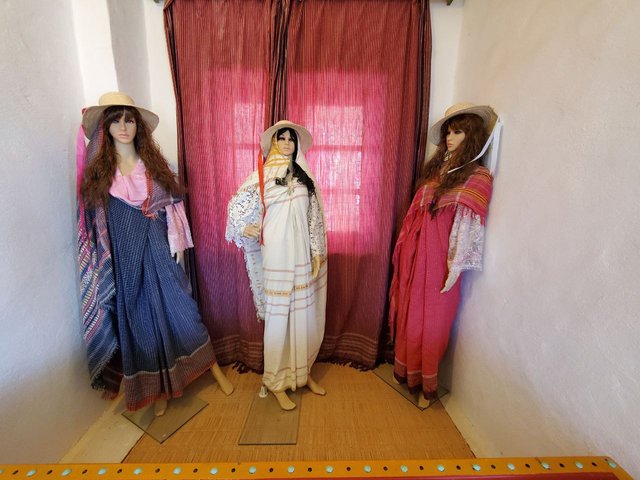
Bridal costumes of Djerrida, resplendent in the colors of the local tradition and heavy with gold.
Family Life and Domestic Rituals
Other rooms display more domestic scenes, a father holding his child, mothers performing traditional rituals, and interior decorations adorned with carpets, cushions of bright colors on the floors and above walls as well as everyday utensils. These reconstructions provide a warm nostalgic look into Djerbian homes from the yesteryears.
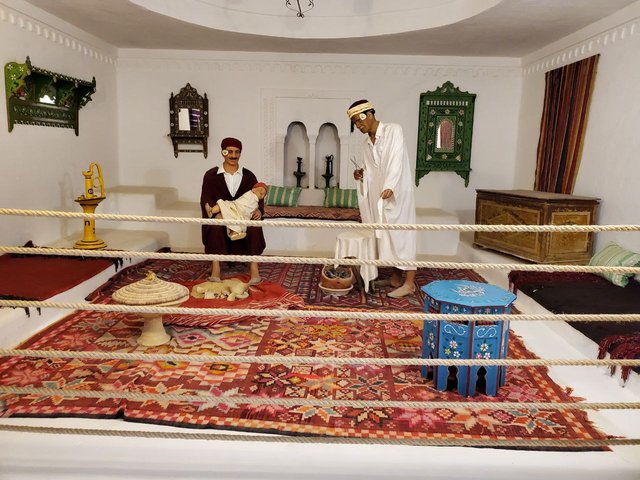
A beautiful moment in a typical Djerbian family house during the reconstitution.
The Traditional Wedding Ceremony
The grand celebration is indeed the wedding in Djerba, where everything can last almost ten days. Very interesting to see the museum tells each stage: start from the process of prepping up to a bride and ceremonial transport. A standout item is the jafha, a camel saddle intended to transport the bride hidden from view in a small decorative room woven out of palm fronds.
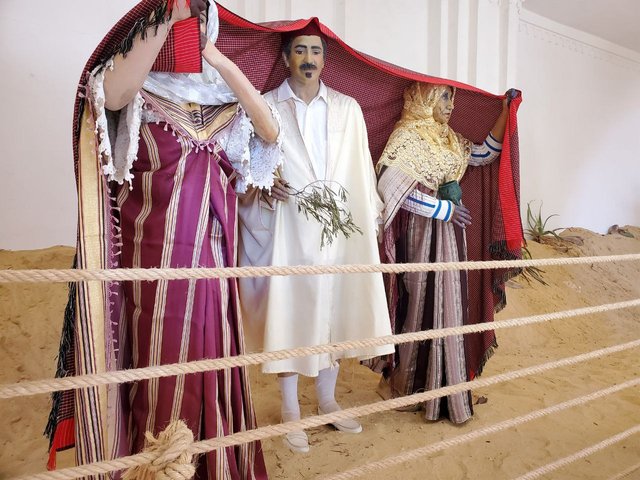
Bride, with golden crown, singing hymns and surrounded by blessings.
Music and Dance
No event is possible without song. Inside the museum are musicians in traditional clothing drumming and playing a zokra (a type of flute). They can be heard breathing at weddings and local festivals, pulsing a beat that speaks of the Djerbian soul.
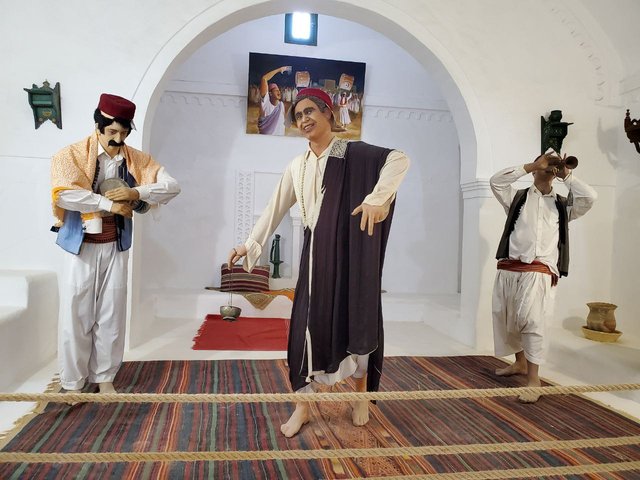
Musicians breathing life into a traditional marriage with ancient musical instruments.
Rural and Pastoral Life
One part of the museum pays homage to shepherds and rural workers, highlighting their bond with the animals and land. One of them is playing the flute in an olive parking, showing that rural life moves from one tone to another.
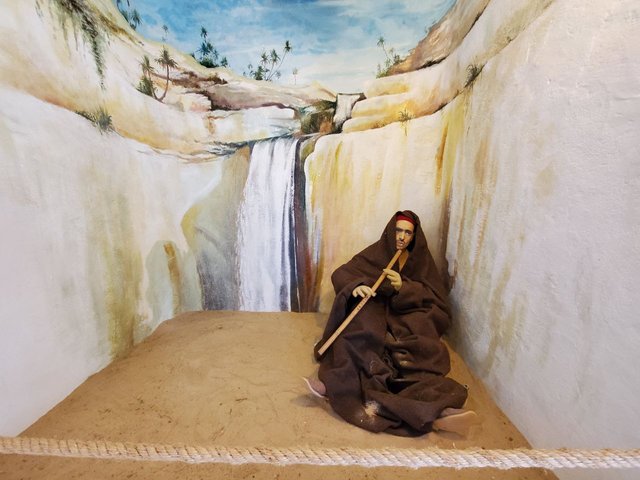
**A shepherd who is keeping alive a centuries-old musical tradition
Calligraphy and Mosaics
The elegant script and cultural significance of calligraphy are presented in delicate compositions, between the intertwined beauty and meaning, of Arabic Calligraphy art.
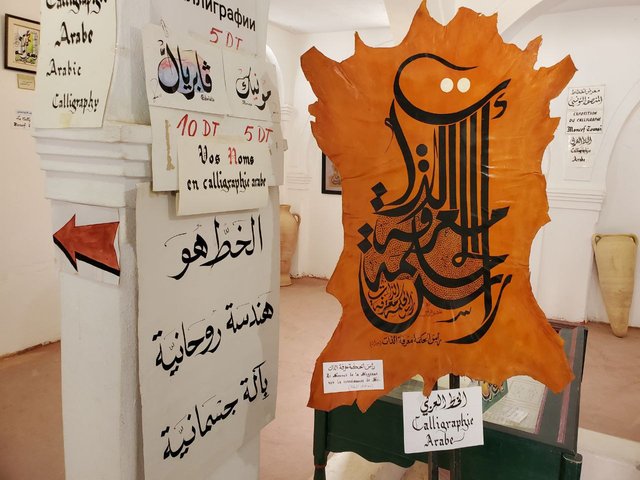
Real Arabic letters and words
The mosaics on display illustrate the Roman touch that has been left behind with intricate geometrical designs and brilliant figural images tell of centuries of Mediterranean history.
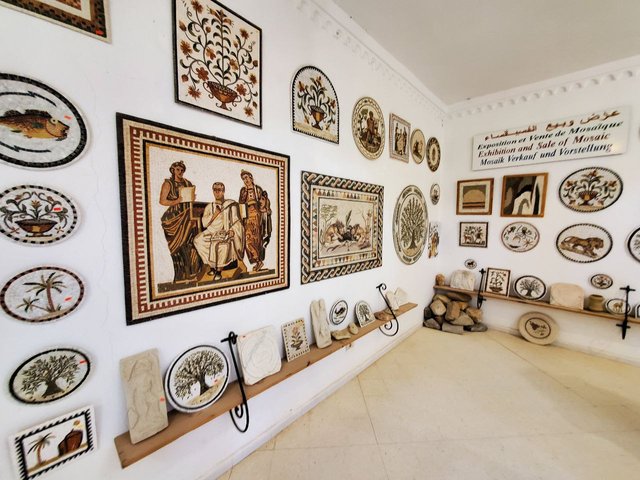
Pattern mosaic of impressive art, derived from ancient times Roman.
Fishing: An Ancestral Craft
Fishing has been a lifeline for Djerba's communities since day one, so the instruments and apparatus of fishing are there in abundance here, too. Fishing nets, miniature models of boats, and many things unearthed here were a reminder of how talented the local fishermen were in using these types of equipment to maneuver through the waters surrounding this island.

A testament to the fishing traditions of the island.
Traditional Crafts of Guellala
With a sure, steady rhythm one has never experienced anywhere in the world—certainly not whilst jostled shoulder-to-linear-inch at some jauntily themed amusement park—skilled hands instruct sculpting generations-old traditions shaping oldtide crafts at the Guellala Heritage Museum! The crafts have provided economic sustainability for the local community as well as being a literal testament to its creativity and resilience, part of which includes a telling tale linked to the island's cultural identity. A life-sized mannequin and original tools, in addition to an accurately set-up room, produce a feel as though time had been transported back with visitors watching the artisans at work.
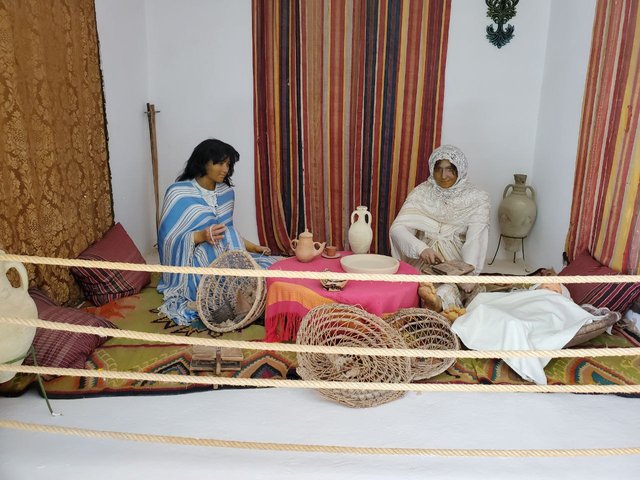
Two women are shown sitting on their colorful woven rugs with all the necessary tools and readymade stuff beside them
The people of Djerba have always known how to weave baskets to fashion beautiful yet useful storage containers from palm leaves and other natural fibers. One is working at the loom, wearing a classic blue striped dress, and the other in a white shawl making finishing touches to the product with nimble fingers. There are a lot of different sizes and shapes of baskets here, showing just how much this craft is integrated into everyday life, from drying bread to bringing the crops to market.

Wooden loom stands as a centerpiece of the museum's artisan section
This wooden loom stands as a centerpiece of the museum's artisan section, showing the intricacies of carpet weaving, which require both technical skill and creativity. A mannequin in traditional garb with a red chechia (cap) can be seen working the loom, with threads all pulled and ready to be woven into that colorful fabric. The sturdy wooden frame set in the sandy floor shows your mudroom is genuine to olden times workshops. These woven carpets are created with incredibly durable designs made up of intricate interlocking geometric shapes, each design representing traditional Berber cultural beliefs.

Wool Dyeing Process
The museum uses this beautiful image to present an exhibition on the oldest form of wool dyeing. The above image is of the craftsman holding beautiful colors of wool beside a large metal container where dyeing takes place on the wood fire, with the loops of red, green, yellow, blue, and black wool hanging on pegs to dry behind him. These were traditionally derived from plants, roots, and rocks in different ways to create the rich and unique colors. The colors that were prepared in a bright and vibrant way were woven into carpets, blankets, and traditional garments that followed the polychromatic environment filled with culture to evoke the attention of end users.
The Pottery Section – From Clay Extraction to Finished Product
The pottery sector of the Guellala Heritage Museum is an enchanting tale to visit for visitors of one of the oldest and most prestigious crafts on the island of Djerba. This examination does not end on the finished ceramic works but also encompasses the way clay is extracted, kneaded, and baked. Every single piece is meticulously recreated so that visitors can really understand what pottery has meant for the culture and economy of those living on the island for thousands of years.

Traditional Camel-Powered Mill
A toughie elves' econo-reprint that includes a camel (harnessed to an ancient cross-beam) solemnly lurching in halting circles for the purpose of rolling a weighty stone wheel. The mixture was ground with this equipment and folded together for the shaping of soil. A stage of stone walls and arched buttresses on three sides gives the impression of a Djerbian master potter atelier.
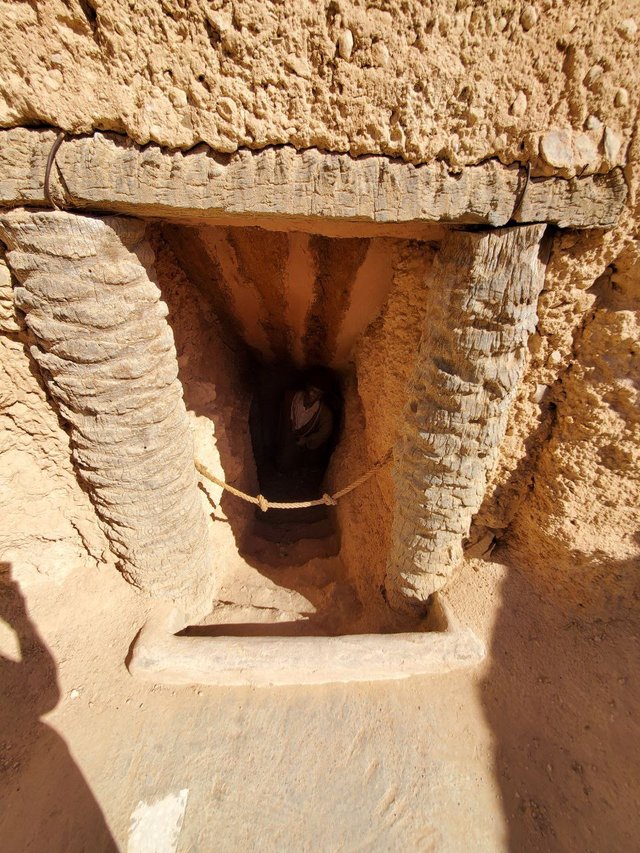
Clay Extraction Site Entrance
Image showing the entrance to the site of the clay extraction, narrow shafts dug deep into the ground. As for the bungalow interior, one can feel that the support beam and frame are well used. But then it veers into a kind of grotesque-exotic, hinting at the intensive hand labor required to extract the clay. Sites like this one must have been the principal source of the type of particularly durable clay that made Djerba ceramics quick to become a household name.
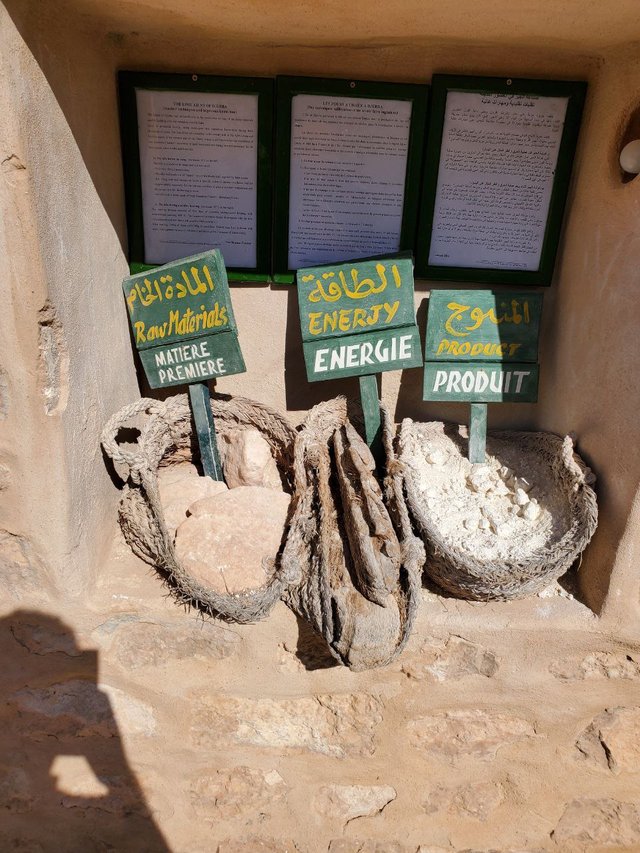
Raw Materials, Energy Sources, and Final Products
This includes three main products of clay manufacture and raw clay, the firing process, and the ceramics. The materials that the women use are spread out in wicker baskets, all symbolizing how Djerbian people would obtain, store, and transport clay. Signs in Arabic, French, and English allow this exposition to be understood by audiences worldwide.
Amazigh History, Writing, and Calendar
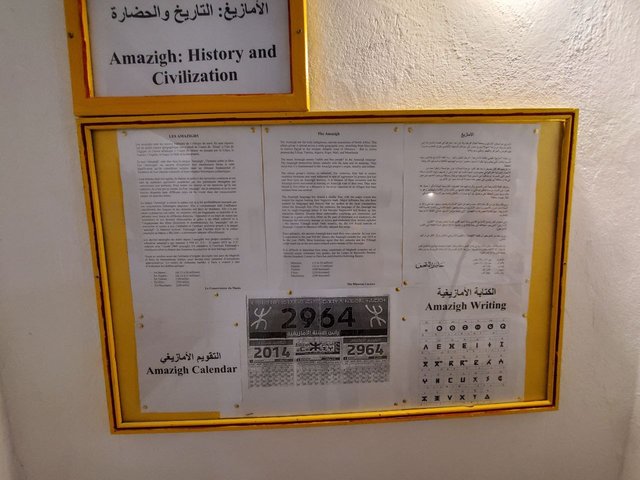
Amazigh Calendar
The Guellala Heritage Museum features an Amazigh (Berber) civilization, one of North Africa's oldest. The panel goes on to describe their historical background in the region, available in Arabic, French, and English by attesting to their long-standing presence here and imprint on Djerba's tradition.
Displayed with Tifinagh script, i.e., the Amazigh alphabet still in use to this day, and an Amazigh Calendar marking the year 2964 (2014 Gregorian). Agricultural migratory lifestyle and frequency change of seasons around them are represented in this ancient timekeeping system, which is there as part and parcel of their living culture.
Guest Book
As I was preparing to leave, I gathered in front of the guest book for the museum and left a few heartfelt words there expressing my gratitude for how well they have kept this cultural gem.
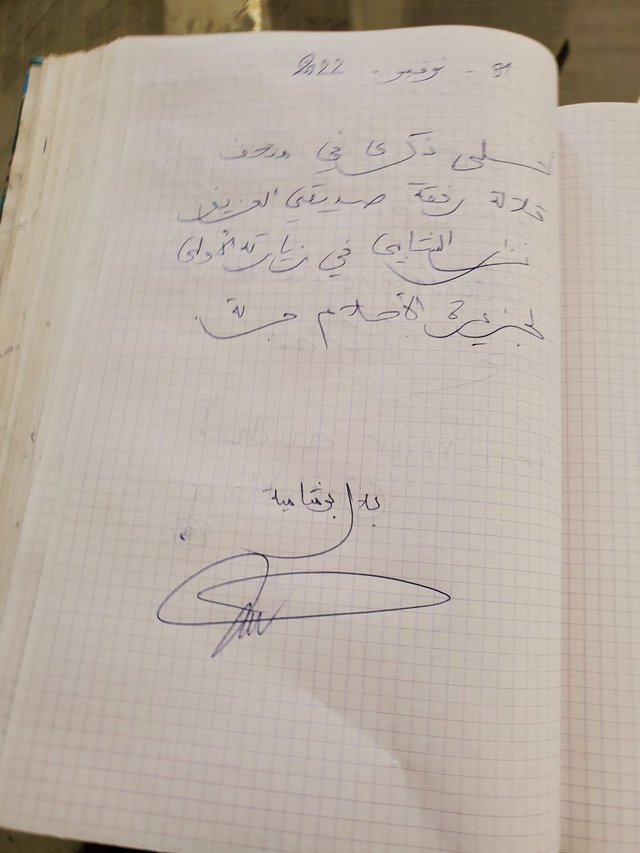
A handwritten souvenir from the visit.
My selifes
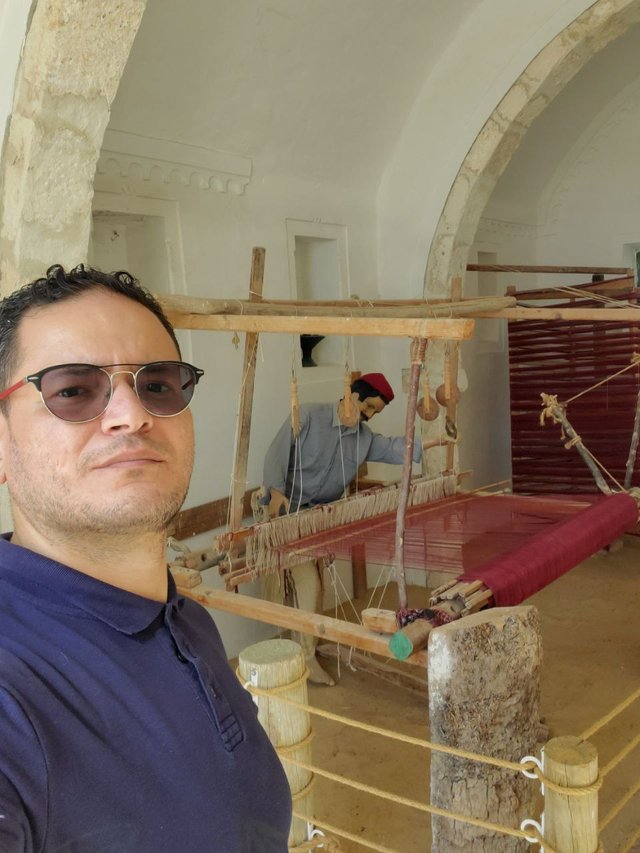 | 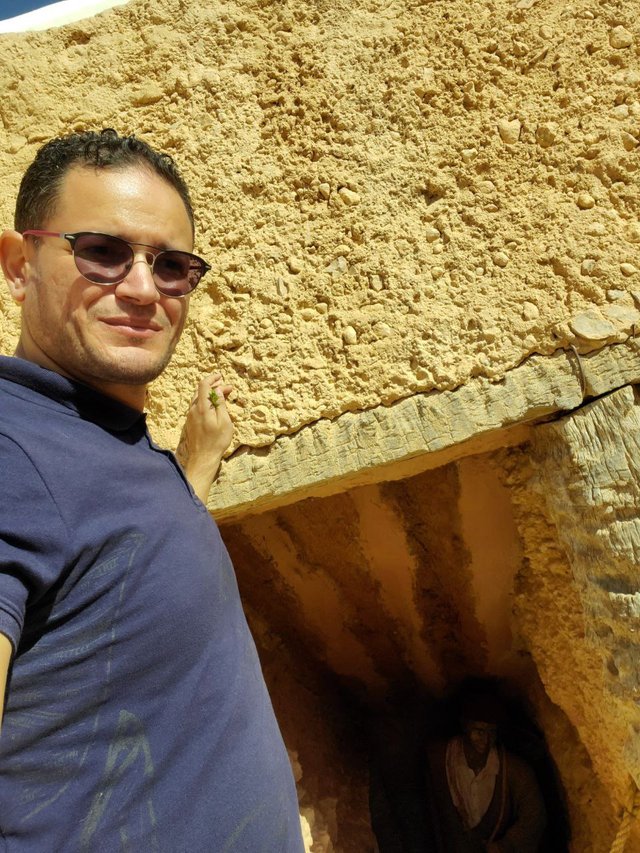 | 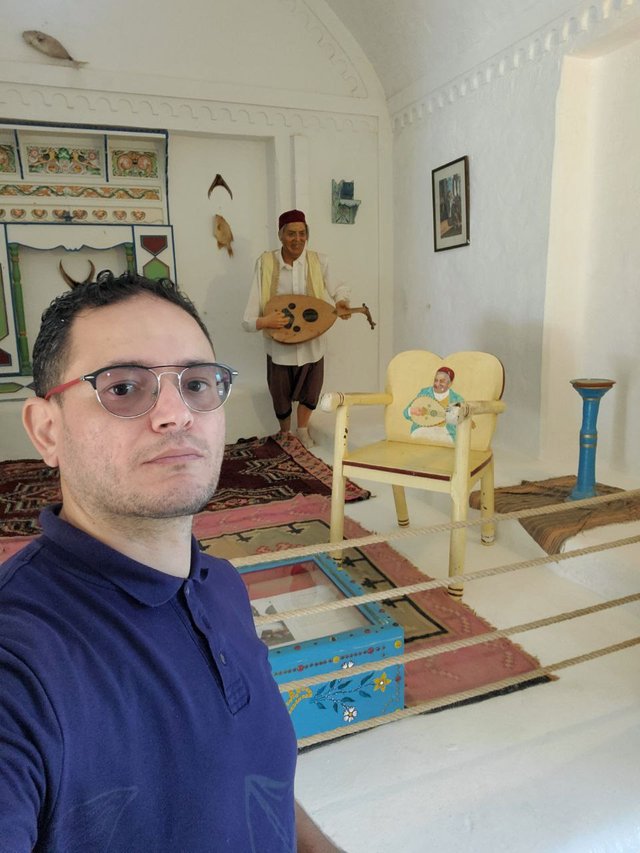 |
|---|
Practical Information
| Category | Details |
|---|---|
| Name | Guellala Heritage Museum, Djerba |
| Type | Museum |
| Visit Date | November 1st, 2022 |
| Address | Guellala 4155, Djerba – Tunisia |
| Google Maps | Click here 👉 |
| Opening Hours | Winter: 08:00 – 18:00 / Summer: 08:00 – 20:00 |
| Entrance Fee | 10 TND (≈ 26.4 STEEM) + 3 TND (≈ 7.92 STEEM) for photography |
| Steem Atlas | [//]:# (!steematlas 33.73253062 lat 10.86564213 long d3scr) |
| Facebook Page |
Note: All photographs are my own, taken with my Samsung Note 10 Plus.
Thank you very much for reading, it's time to invite my friends @sualeha, @drhira, @shiftitamanna to participate in this contest.
Best Regards,
@kouba01

@tipu curate
;) Holisss...
--
This is a manual curation from the @tipU Curation Project.
Upvoted 👌 (Mana: 3/7) Get profit votes with @tipU :)